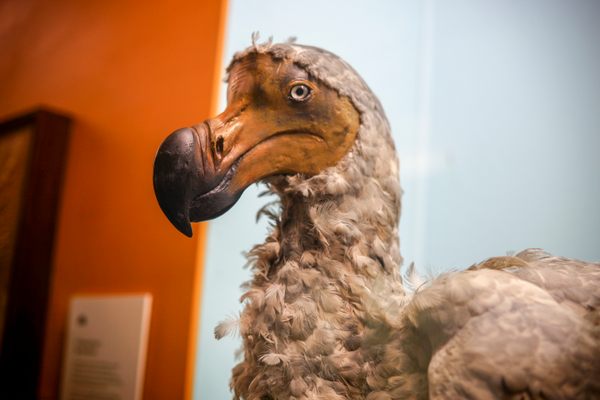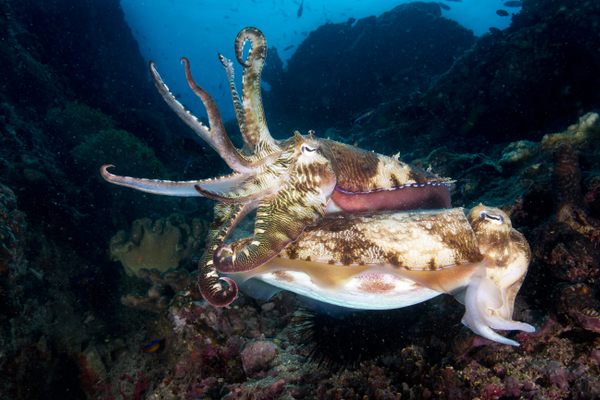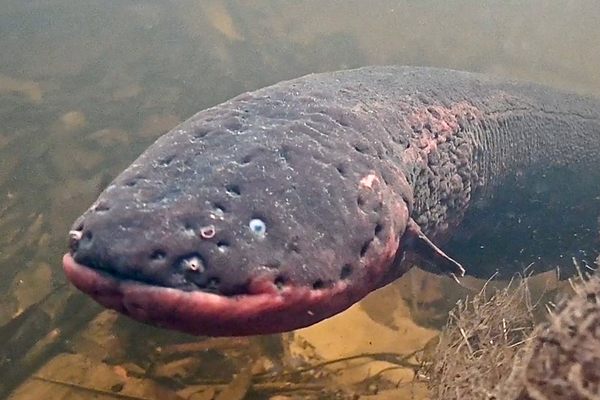Why Did the Chum Salmon Cross the Road?
Every year, these fish block traffic in Washington State.

Most of the time, Skokomish Valley Road in Washington is a quiet, two-lane street with the occasional car passing by. But every year around November, the road finds itself heavy with traffic as a motorcade of shimmering chum salmon exit the nearby Skokomish River and cross the road in a frenzy.
Their destination is anticlimactic. Most of the thousands of salmon who cross the road end up flopping to their deaths in a field and are picked up by a passing raccoon or hawk.
The annual phenomenon caught the attention of internet users last month when a Washington resident named Diana Kannenberg posted a short video of the salmon traffic jam online (seen below). While wildlife crossing is not particularly unusual in the Evergreen State, the animals blocking traffic are usually not fish.
But this spot is special. This salmon crossing happens almost every year at the same location around five miles down the Skokomish River, says Aaron Dufault, salmon policy analyst for the Washington Department of Fish and Wildlife. Dufault credits a unique combination of factors that often coincide in mid- to late-November: heavy autumn rains, peak chum salmon returns, and a stretch of river prone to flooding that happens to be right next to a road.
“The river overflows its banks, and you’ll get a whole bunch of fish that’ll just follow wherever the river is,” says Dufault, “even when following the river means crossing a road.”
Some of the salmon will backtrack and make it back into the river, but most will die in the fields where they become fertilizer or food, according to Dufault. Although it may be distressing to see so many salmon lose their way, Dufault says the location of the fish means they are probably from a nearby hatchery, where chum salmon are born in a human-managed environment and released into rivers to supplement wild populations. “They are pretty close to the end of their journey,” he says.
Dufault says the nearby salmon hatcheries usually return more fish than they need on an annual basis, so losing a couple thousand every year doesn’t make much of a difference from a population standpoint. “Sometimes we can surplus tens of thousands,” says Dufault. “We’re talking like 30 or 40,000 sometimes. So the scale just isn’t quite commensurate with there being either a financial or conservation issue.”
The crossing is a chance for Washingtonians to see the remarkable athleticism of salmon, Dufault adds. “Most people know they’re pretty amazing critters that can overcome quite a few obstacles to get back to spawn,” he says. “They’re able to get over the road when they’re barely half-covered in water. It’s always amazing to see how well they can migrate through such little water.”
Watching the salmon propel their muscular bodies through an inch of water, like hydroplane boats, striving towards probable death by the thousands, one can’t help but be impressed, “It’s obviously not ideal for them,” says Dufault, “but they will do their darndest to get through it.”


















Follow us on Twitter to get the latest on the world's hidden wonders.
Like us on Facebook to get the latest on the world's hidden wonders.
Follow us on Twitter Like us on Facebook